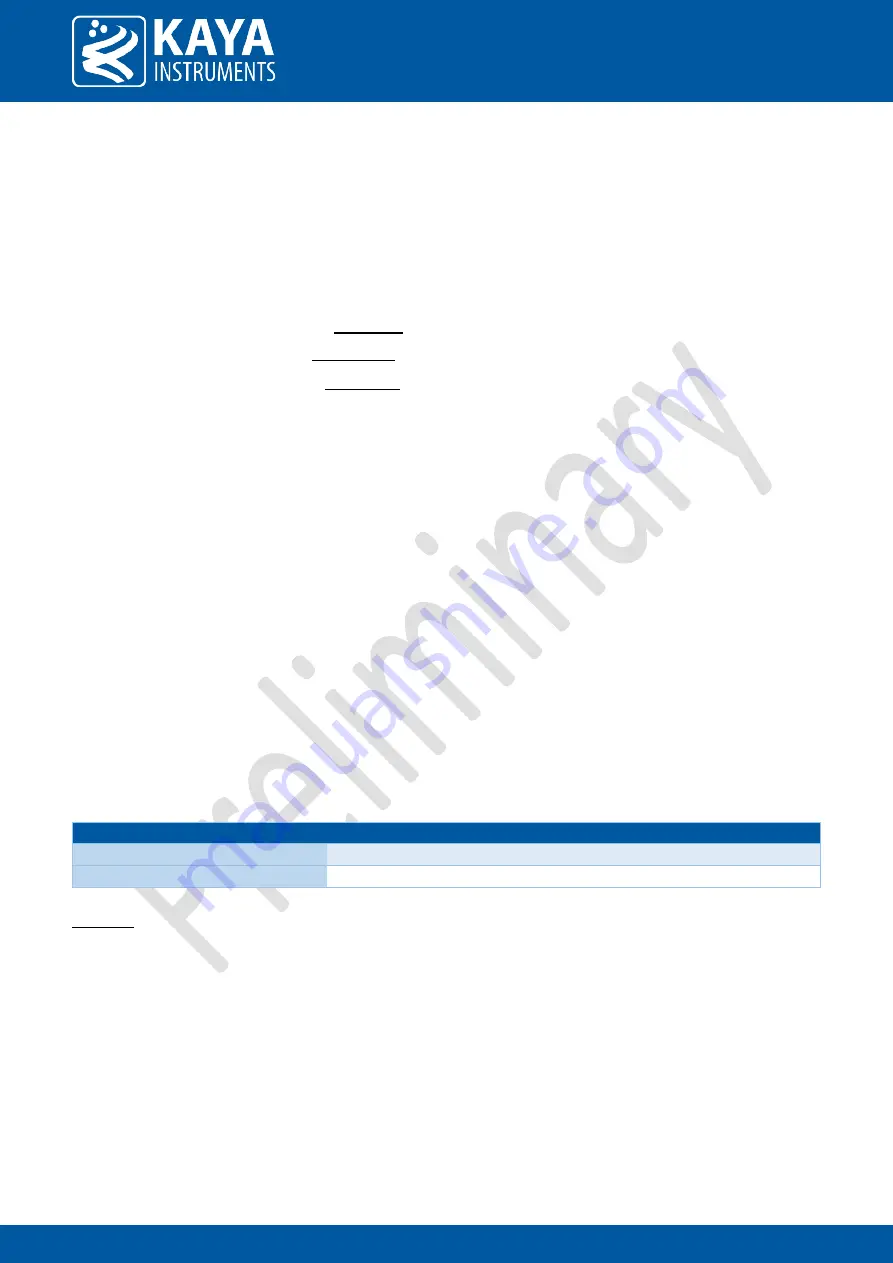
2 0 H a M e s i l a S t . , N e s h e r 3 6 8 8 5 2 0 , I s r a e l
P O B 2 5 0 0 4 , H a i f a 3 1 2 5 0 0 1 , I s r a e l
T e l : ( + 9 7 2 ) - 7 2 - 2 7 2 3 5 0 0 F a x : ( + 9 7 2 ) - 7 2 - 2 7 2 3 5 1 1
Page no. 37 | Appendix No. 1
8.11
Loop-up Table Management
The LUT Control can be used to re-map the image linear output in different manner. Mostly to compensate for
the non-linear scene emission. Each index at the LUT corresponds to the original pixel value, and the LUT value at
this index corresponds to the new value that the pixels should be replaced with.
Pixel value is replaced according to the following equation:
P
red
(x, y) = LUT
red
[P
red
(x, y)]
P
green
(x, y) = LUT
green
[P
green
(x, y)]
P
blue
(x, y) = LUT
blue
[P
blue
(x, y)]
Where P(x,y) is the pixel at offset X in horizontal and Y in vertical, of specific color.
Lookup table can be set in one of the following methods:
1.
LUTs can be programmed using up to 48 sample points. All intermediate values are calculated with a spline
interpolator (see
lut_sample_<channel>
commands
).
2.
LUTs can be programmed by specifying a set of parameters which will be used to calculate and apply a gamma
curve according to REC.709 standard (see
lut_fun_rec709
command).
3.
LUTs can be fast configured by specifying only the desired gamma value of the REC.709 gamma function (see
lut_fast_gamma
command
).
4.
LUTs can be configured with a fixed configuration of three presets which include the default REC.709 gamma
curve and two HDR gamma curves: PQ and HLG (see
lut_fixed_mode
command).
8.11.1
lut_enable <reserved=0> <flag>
Enables the function for look up table.
Flag
Function
0
Disable (linear)
1 (
1 (reset)
Enable
Remarks:
1.
<reserved> input parameter should always be 0
Example:
// Apply LUT table configuration.
lut_enable 0 1



























